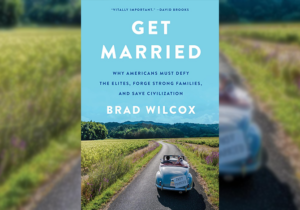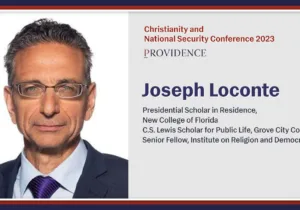Brandon Sanderson’s fantasy novel Warbreaker (2008) is a story about stories. A man has been raised from the dead—but he knows not why; perhaps there is no cosmic ‘why’ to be discovered. A sword has been given life in order to destroy evil: but what is evil? And how would a sword, even a sentient one, discern the merely unpleasant and unsavory from the bad or the corrupt? An emperor has lived his entire life in isolation: unseen, untouched, unheard. How could he learn to rule justly?
Good fiction contains truth that surpasses even nonfiction. A tale (especially a tall one) can express truths more forcefully than data-driven analysis. There are depths of the human experience that can only be probed with paint or prose. “Was Melville,” one writer asks, “not delving for a deeper truth than we can find in any number of how-to books?” For the novel, unlike charts and graphs, must speak a normative language. Oughts and Ought Nots thrive in the fecund soil of fiction.
Warbreaker’s resurrected man, Lightsong, slips right into the narrative: “Lightsong didn’t remember dying. His priests, however, assured him that his death had been extremely inspiring. Noble. Grand. Heroic.” Though he is now venerated as a god, Lightsong has no clue how he died or for what purpose he was given new life. Suspecting the two might be related, Lightsong begs the very priests who worship him to recount stories of the man he was before his death and resurrection.
Lightsong understands that it is impossible to make sense of what he must do without knowing who he was. Retrograde amnesia keeps the resurrected potentate from discerning a purpose in his second life. In the meantime, the best Lightsong can aspire to is dissuading his priests and petitioners from worshipping him.
In high fantasy, any weapon worth its salt has a name: “Excalibur,” “Mjolnir,” “Glamdring”—the list goes on and on. Therefore, it is unsurprising that the fiercest sword in Warbreaker has a name: “Nightblood.” Though a hero’s weapon with a memorable name is a common fantasy trope, Nightblood thinks and talks much like any other character in the book (albeit with a much greater penchant for bloodlust) makes it unique: “Hello! Would you like to destroy some evil today?” Yet despite the bewildering capacity of this sword to think, it quickly becomes clear that Nightblood has no clue what ‘evil’ entails. He is like a child, stumbling after moral understanding.
As one of the novel’s protagonists wonders, “How was an object of steel—an object that was so removed from life that it would find the experience of living strange and alien—supposed to understand what ‘evil’ was? The answer, as Nightblood himself attests, is that it takes time. “I’m figuring it out. I’ve had a lot of practice.” Even if goodness be a transcendent truth, moral understanding still does not descend to us from on high. Understanding requires a certain kind of work and attention.
And finally, the emperor: Susebron, a boy who, despite his royal title, has been raised like a feral child. His priests, fearing his power, cut out his tongue to keep him a puppet for their machinations. Yet despite his seclusion, Susebron has grown to be good. Unlike Nightblood, who probes at morality indeterminately, Susebron knows what he believes. While lacking the opportunities to practice and exercise moral judgement, Susebron has been well-catechized by the stories his mother reads to him. These stories, devoured endlessly by Susebron like a holy book until they were completely memorized, constitute the emperor’s moral imagination.
As literary critic George Steiner observed, “to learn by heart is to afford the text … an indwelling clarity and life-force. … What we know by heart becomes an agency in our consciousness, a ‘pace-maker’ in the growth and vital complication of our identity.” Susebron has grown good, despite his hermitage, because of the stories that fill his mind, giving him ‘clarity and life-force.’
The critical difference between the emperor Susebron and the enchanted sword Nightblood—the difference which the resurrected Lightsong is himself grasping after—is knowing and inhabiting such a story. Nightblood is removed from life; he can hardly remember how he came to be. Like Nightblood, Lightsong does not know who he was, and his ignorance of the past keeps him from knowing what his purpose is in the present. These two find themselves—Lightsong much more self-consciously—in the problem described by moral philosopher Alasdair MacIntyre: “I can only answer the question ‘what am I to do?’ if I can answer the prior question ‘Of what story or stories do I find myself a part?’”
Narrative, as it turns out, is not merely a medium of truth but truth’s necessary vessel. Stories are what make actions not only discernible as good or bad but also, more essentially, what grant actions their intelligibility as actions.
Imagine that I am waiting for the bus to arrive and a man next to me says, “The name of the common wild duck is Histrionicus histrionicus histrionicus.” While the sentence is perfectly true (the Latin checks out!) and syntactically correct, the act of speaking it can only be deemed unsettlingly absurd unless I can come up with an account, that is, a story, that renders the action intelligible. (If you still don’t agree, try saying Histrionicus histrionicus histrionicus at the bus stop and see how people respond).
MacIntyre suggests some of the following scenarios in which such an utterance would be intelligible:
[The man] has mistaken me for someone who yesterday had approached him in the library and asked: ‘Do you know the Latin name of the common wild duck?’ Or he has just come from a session with his psychotherapist who has urged him to break down his shyness by talking to strangers. ‘But what shall I say?’ ‘Oh, anything at all.’ Or he is a Soviet spy waiting at a prearranged rendez-vous and uttering the ill-chosen code sentence which will identify him to his contact.
It is the presence of a contextualizing story that renders human action intelligible. Intelligibility is not the same thing as morality; that is, intelligibility does not render an action morally righteous correct or evil. Rather, intelligibility provides us with the necessary context to begin to discern just what kind of action we witnessed: a good one, a bad one? A wasteful one, an expeditious one?
Moral judgements and moral action receive their intelligibility from grounding in narrative frameworks. Hence why the resurrected hero Lightsong needs to know who he was in order to know what he must do next, and why, by inhabiting the stories he heard as a child, emperor Susebron knows (at least he believes) what right and wrong are and can live accordingly.
We acquire narratives that give intelligibility to our lives in all sorts of ways: from religion, fiction, movies, and other forms of story-telling. More subtly, we acquire narratives from the things we do: we comprehend the story of who we are and what the world is like from the habits and situations of our lives. Shopping malls are designed to encourage us to see ourselves as consumers who are made happy through consumption; we take on a role when we enter into a sports arena; even our situation in a family gives us a story about who we are, our duties to others, and so on.
Returning to the ‘feral’ emperor, Susebron, we, like him, learn to think about the world and make moral judgements through our moral imaginations formed through the stories we hear, hence our turn to fiction in times of crisis. During the 2016 Presidential Election, many Americans turned to Harry Potter, seeing themselves as the book’s trio fighting a war against Voldemort and his Death Eaters. Today, they turn to The Handmaid’s Tale to give voice to their feeling of oppression under what they understand to be a patriarchal regime.
The point to remember, though, is that these stories do not merely serve as a metaphor for communication. The stories we ‘learn by heart’ have power over our consciousness, teaching us to see the world in a certain way. As another moral philosopher, Iris Murdoch observed, “you can only act in the world you can see, and you can only come to see what you can say.” Fiction teaches us to see the world but also to speak the world. And if we are to think morally, we must learn to see and speak the world.
But that means we must also be dreadfully careful. Not all fiction is ‘delving for a deeper truth.’ Truly good fiction, even at its most fantastical, does not attempt to “move or mold reality in the interests of abstract truth,” as Flannery O’Connor warned. The laws of physics may be altered, the characters may be talking animals, but the best fiction still must be “humble in the face of what is,” that is, what it means to be a person, the nature of community, and the struggle of life. Some fiction “skips the process of engaging with concrete reality” in order to promote an abstract truth. We often call this imposition of an ideology on art “propaganda,” but it does not have to be political in nature. Fiction can also distort reality through excess sentimentalism (think of a fluff romance novel or many a Christian movie).
If we want to know how to think morally about the world, we need to become more selective in what we consume. Not all of us are so fortunate as a Susebron, who had the good grace to have his mother read him what she did. Many will have their life’s work cut out for them in un-learning the wrong things, the things that make it hard for us to be “humble in the face of what is.” But most of all, if we want moral understanding, we need to read good fiction.







 Live in the DC area? Sign-up for Providence's in-person events list!
Live in the DC area? Sign-up for Providence's in-person events list!